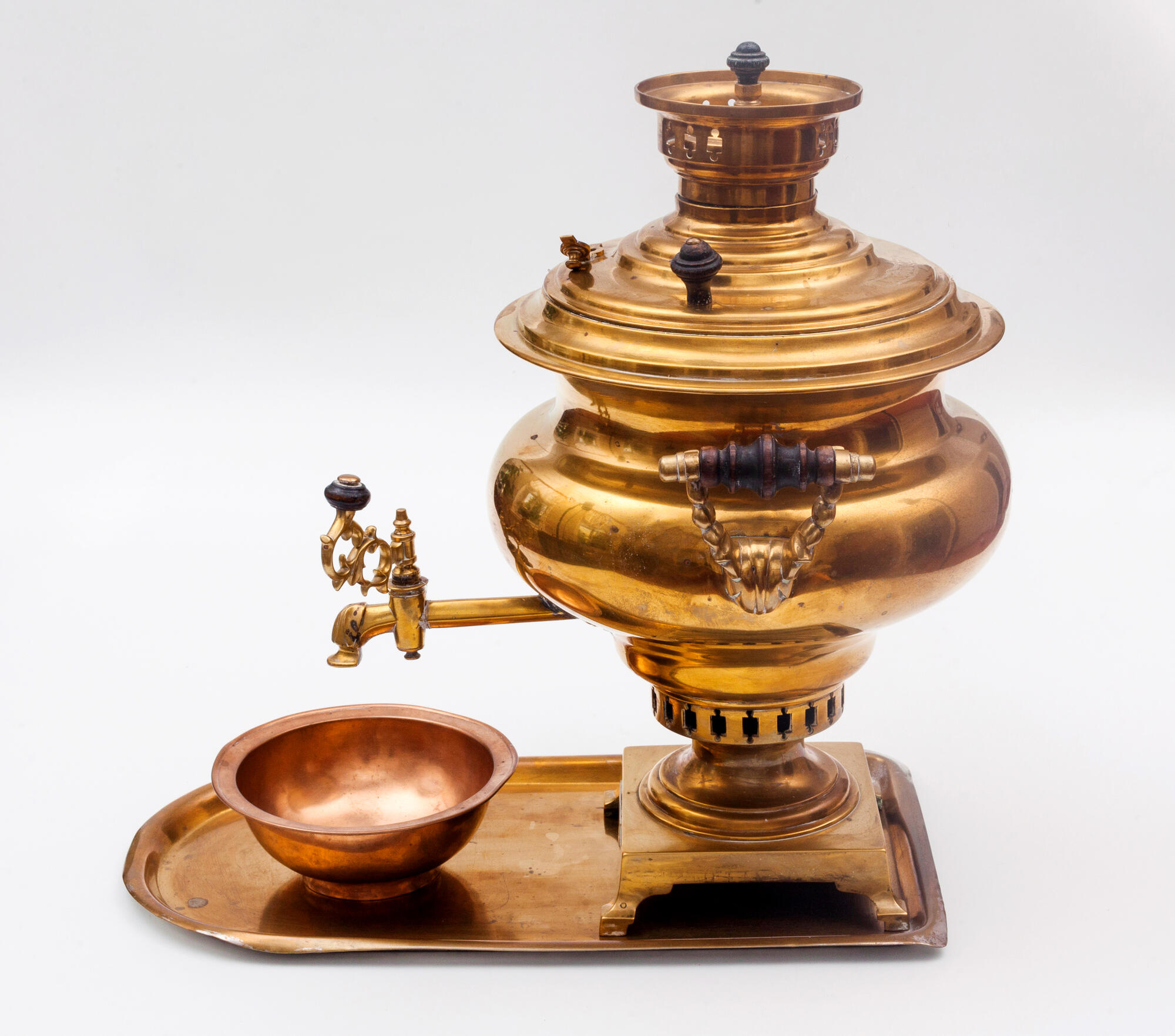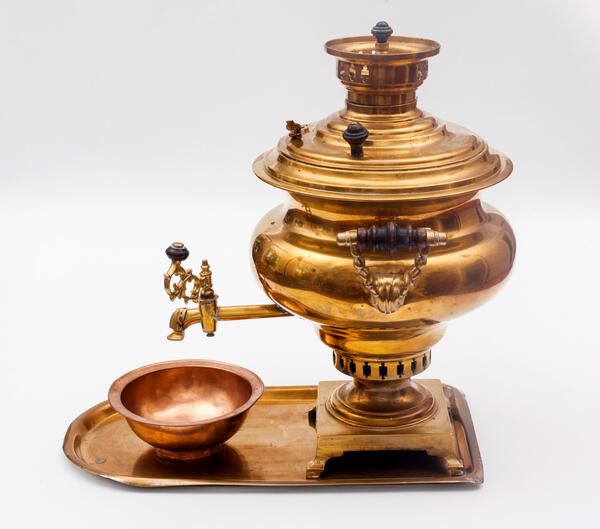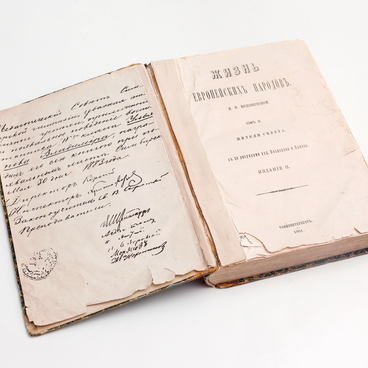The brass samovar, standing on a small table near the window in the dining room of the House-Museum of Vladimir Lenin, was made at the Vorontsov Brothers Factory in the second half of the 19th century in Tula. This is a duplicate of a samovar that belonged to the Ulyanovs. The original is kept in the Vladimir Lenin Museum in Moscow.
The body of the samovar is made in the form of a smooth-walled vase with a protruding rounded middle part and an intercept in the upper part. The base of the samovar is square, on four angular legs, in the lower part there is an ash-pit with shaped slits; such a samovar was heated with coals.
The sides of the product have small handles in the form of two shaped plates, connected by wooden holders. The tap has a figured massive drain and a relief rosette at the base. The faucet key is made in the form of a ‘branch’ with a wooden cone. The lid is stepped with two wooden grips and a vaporizer — a hole to bleed steam. The lid bears the trademark of the Vorontsov brothers.
Usually, the samovar was placed on a tray so that the table was not heated. Samovar trays were not wide, rectangular in shape. The bowl was another obligatory part of the samovar set. It is a low and wide bowl, where they poured the rest of the water from the samovar and the remains of the brew from the cups. It was placed under the samovar faucet so that there was no puddle of water on the tray.
During the tea party, the samovar took center stage on the table. In the Ulyanovs’ house, tea was served with marshmallows, dried fruit, jam, and pastries.
Dmitry Ulyanov, Lenin’s younger brother, recalled,
The body of the samovar is made in the form of a smooth-walled vase with a protruding rounded middle part and an intercept in the upper part. The base of the samovar is square, on four angular legs, in the lower part there is an ash-pit with shaped slits; such a samovar was heated with coals.
The sides of the product have small handles in the form of two shaped plates, connected by wooden holders. The tap has a figured massive drain and a relief rosette at the base. The faucet key is made in the form of a ‘branch’ with a wooden cone. The lid is stepped with two wooden grips and a vaporizer — a hole to bleed steam. The lid bears the trademark of the Vorontsov brothers.
Usually, the samovar was placed on a tray so that the table was not heated. Samovar trays were not wide, rectangular in shape. The bowl was another obligatory part of the samovar set. It is a low and wide bowl, where they poured the rest of the water from the samovar and the remains of the brew from the cups. It was placed under the samovar faucet so that there was no puddle of water on the tray.
During the tea party, the samovar took center stage on the table. In the Ulyanovs’ house, tea was served with marshmallows, dried fruit, jam, and pastries.
Dmitry Ulyanov, Lenin’s younger brother, recalled,



